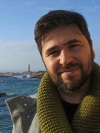Over 40 European Projects Found
Searched on 125080 European Projects
FINISHED
Small vessel diseases in a mechanistic perspective: Targets for InterventionAffected pathways and mechanistic exploitation for prevention of stroke and dementia (SVDs-at-target)
Start date: Jan 1, 2016, End date: Dec 31, 2020,
Stroke and dementia rank among the most pressing health issues in Europe. Cerebral small vessel diseases (SVDs) have emerged as a central link between these two major co-morbidities. SVDs account for more than 30% of strokes and at least 40% of dementia cases. They encounter multiple distinct diseases that can be separated based on their underlying genetic defects, risk factors, and clinical prese ...
Read Project
14
Partners Participants
FINISHED
Ears, Eyes and Mind: The ‘SENSE-Cog Project’ to improve mental well-being for elderly Europeans with sensory impairment (SENSE-Cog)
Start date: Jan 1, 2016, End date: Dec 31, 2020,
Mental, cognitive, vision and hearing health problems in elderly people are amongst the top 10 public health challenges in Europe. They frequently occur co-concurrently and have an additive negative effect on quality of life and mental well-being. To address this negative impact, and promote mental well-being, particularly from a gender and minority community perspective, SENSE-Cog's aim is to: (1 ...
Read Project
18
Partners Participants
FINISHED
PREvention of Complications to Improve OUtcome in elderly patients with acute Stroke (PRECIOUS)
Start date: Jun 1, 2015, End date: May 31, 2020,
Every year, 1.3 million Europeans have a stroke and one million ultimately die of stroke. One third of stroke patients remain dependent on the help of others. The annual costs for stroke care in Europe are estimated at € 64.1 billion. Stroke incidence increases almost exponentially with age, and the personal, societal, and economic burden of stroke is therefore largely driven by its frequent occur ...
Read Project
20
Partners Participants
FINISHED
RELapses prevENTion in chronic autoimmune disease: common mechanisms and co-morbidities (RELENT)
Start date: Nov 1, 2015, End date: Apr 30, 2020,
RELENT is multidisciplinary group of scientists and clinical investigators whose goal is to develop individualized treatment for chronic autoimmune diseases, such as rheumatoid arthritis and vasculitis, that cause considerable mortality and morbidity, both from uncontrolled disease and treatment associated co-morbidities, like infection and malignancy. This requires the need to stratify patients b ...
Read Project
14
Partners Participants
FINISHED
Collaborative European NeuroTrauma Effectiveness Research in TBI (CENTER-TBI)
Start date: Oct 1, 2013, End date: Mar 31, 2020,
Traumatic Brain Injury (TBI) is a major cause of death and disability, leading to great personal suffering to victim and relatives, as well as huge direct and indirect costs to society. Strong ethical, medical, social and health economic reasons therefore exist for improving treatment. The CENTER-TBI project will collect a prospective, contemporary, highly granular, observational dataset of 5400 p ...
Read Project
44
Partners Participants
FINISHED
Repair of tissue and organ damage in refractory chronic graft versus host disease after hematopoietic stem cell transplantation by the infusion of purified allogeneic donor regulatory T lymphocytes (TREGeneration)
Start date: Jan 1, 2015, End date: Dec 31, 2019,
Our proposal encompasses parallel clinical trials addressing the feasibility and the effectiveness of donor-derived regulatory T cells (Treg) as a therapeutic agent in the treatment and prevention of tissue and organ damage resulting from graft versus host disease (GVHD) after hematopoietic stem cell transplantation (HSCT).We propose a collaborative clinical study in which Treg therapy for GHVD is ...
Read Project
8
Partners Participants
FINISHED
Folate-Target Nanodevices To Activated Macrophages For Rheumatoid Arthritis (FOLSMART)
Start date: Jan 1, 2016, End date: Dec 31, 2019,
FOLSMART will bring to phase I clinical trials novel folate-based nanodevices (FBN) for the treatment of rheumatoid arthritis (RA). These nanodevices for folic acid (FA)-mediated targeting of activated macrophages showed improved clinical scores in a mouse model of RA when compared to methotrexate (MTX), a first-line drug therapy for the treatment of RA. In this way, FBN will be benchmarked agains ...
Read Project
8
Partners Participants
FINISHED
Cancer treatment and monitoring through identification of circulating tumour cells and tumour related nucleic acids in blood (CANCER-ID)
Start date: Jan 1, 2015, End date: Dec 31, 2019,
Blood-based biomarkers such as Circulating Tumor Cells (CTCs), circulating free tumor DNA (cfDNA) and microRNAs (miRNAs) have the potential to improve the development of personalized medicines for cancer patients. This is of particular importance when biopsies of the primary tumor or metastases are not accessible (e.g. at early disease stages or in minimal residual disease) or possible and the ass ...
Read Project
34
Partners Participants
FINISHED
Diamond materials for the photocatalytic conversion of CO2 to fine chemicals and fuels using visible light (DIACAT)
Start date: Jul 1, 2015, End date: Jun 30, 2019,
In DIACAT we propose the development of a completely new technology for the direct photocatalytic conversion of CO2 into fine chemicals and fuels using visible light. The approach utilises the unique property of man-made diamond, now widely available at low economic cost, to generate solvated electrons upon light irradiation in solutions (e.g. in water and ionic liquids). The project will achieve ...
Read Project
8
Partners Participants
FINISHED
Targets and biomarkers for antiepileptogenesis (EPITARGET)
Start date: Nov 1, 2013, End date: Oct 31, 2018,
Epilepsy is a devastating condition affecting over 50 million people worldwide. This multidisciplinary project is focused on the process leading to epilepsy, epileptogenesis, in adults. Our main hypothesis is that there are combinations of various causes, acting in parallel and/or in succession, that lead to epileptogenesis and development of seizures. Our central premise and vision is that a comb ...
Read Project
20
Partners Participants
FINISHED
Application of combined gene and cell therapy within an implantable therapeutic device for the treatment of severe hemophilia A (HemAcure)
Start date: Nov 1, 2015, End date: Oct 31, 2018,
The main objective of the HemAcure project is to develop and refine the tools and technologies for a novel ex vivo prepared cell based therapy to treat the bleeding disease haemophilia A (caused by genetic deficiency in clotting factor VIII (FVIII)) that should ultimately lead to improved quality of life of the patients. The concept is a further development of our approach, established during the ...
Read Project
7
Partners Participants
FINISHED
Labeling of Enalapril from Neonates up to Adolescents (LENA)
Start date: Nov 1, 2013, End date: Oct 31, 2018,
Children are often treated as small adults—not as the special patients they are. Regulations exist to encourage the development of drugs and formulation for children. However, off-patent drugs are often administered to children without appropriate formulations or systematic investigations. Therefore, the paediatric use marketing authorisation (PUMA) has been designed.The EMA Paediatric Working Par ...
Read Project
14
Partners Participants
FINISHED
Personalised Prognostic Tools for Early Psychosis Management (PRONIA)
Start date: Oct 1, 2013, End date: Sep 30, 2018,
Affective and non-affective psychoses have a major negative impact on human society. They account for 6.3% of the global burden of disease and cost €207 billion per year in Europe alone, making them the most expensive brain-related disorders and even more expensive than cardiovascular diseases. This socioeconomic burden is largely caused by two core disease features: onset in adolescence and early ...
Read Project
13
Partners Participants
FINISHED
MicroRNAs in the Pathogenesis, Treatment and Prevention of Epilepsy (EPIMIRNA)
Start date: Sep 1, 2013, End date: Aug 31, 2018,
Epilepsy is a major burden for patients and health systems worldwide. It is a common chronic neurological disorder affecting people of all ages, and the shortfall in existing treatments means that 30% of patients continue to suffer uncontrolled seizures. MicroRNAs (miRNA) are a recently-discovered, network-level layer of gene expression regulation that controls protein levels of entire signaling p ...
Read Project
19
Partners Participants
FINISHED
New approaches in the development of Hypoallergenic implant material in Orthopaedics: steps to personalised medicine (HYPORTH)
Start date: Aug 1, 2013, End date: Jul 31, 2018,
Europe is confronted by a demographic challenge as a decreasing work force has to support an increasing elderly population. The economic risk implied by this burden could be addressed by efforts to achieve an increase in Healthy Life Years. One key element would be to ensure unrestricted mobility for especially the elderly, allowing them to stay at work for longer. Irreversible joint deterioration ...
Read Project
11
Partners Participants
FINISHED
Neurobiology and Treatment of Adolescent Female Conduct Disorder: The Central Role of Emotion Processing (FEMNAT-CD)
Start date: Sep 1, 2013, End date: Feb 28, 2018,
Conduct Disorder (CD) and Oppositional Defiant Disorder with symptoms of Conduct Disorder (which is included among the abbreviation “CD” throughout the proposal) has a highly negative impact for the affected individual as well as for families and society. Although the number of females exhibiting serious aggressive behaviours is growing, the majority of studies on aetiology and treatment of CD hav ...
Read Project
19
Partners Participants
FINISHED
Bioactivated hierarchical hydrogels as zonal implants for articular cartilage regeneration (HYDROZONES)
Start date: Jan 1, 2013, End date: Dec 31, 2017,
Degeneration of cartilage is a major cause of chronic pain, lost mobility and reduced quality of life for millions of European citizens. From a clinical point of view treatment to achieve cartilage regeneration (hyaline) and not only repair (fibrous) remains a great challenge. No clinical therapy is available that leads to healing of cartilage defects.Current cartilage implants cannot establish th ...
Read Project
18
Partners Participants
FINISHED
European Lead Factory (EUC²LID)
Start date: Jan 1, 2013, End date: Dec 31, 2017,
The European Lead Factory concept proposed by the EUC2LID Consortium relates to the discovery of novel small molecule candidates to serve as starting points for subsequent optimization to either drug candidates or high-quality pharmacological tools for the experimental validation of targets. The concept intends to bridge academic and applied research interests. The European Lead Factory will provi ...
Read Project
34
Partners Participants
FINISHED
Systems medicine of chronic inflammatory bowel disease (SYSMEDIBD)
Start date: Dec 1, 2012, End date: Nov 30, 2017,
Inflammatory bowel disease (IBD) is a major health problem with severe co-morbidities, requiring life-long treatment. Oscillating processes, like biological clocks are well studied and modeled in a number of systems. Circadian rhythms are extremely important for optimal treatments of patients. Recently, the NfkB pathway has been shown to be oscillating. In this project, we will model NfkB oscillat ...
Read Project
13
Partners Participants
FINISHED
Efficacy and safety of MRI-based thrombolysis in wake-up stroke: a randomised, double-blind, placebo-controlled trial (WAKE-UP)
Start date: Dec 1, 2011, End date: Nov 30, 2017,
WAKE-UP is an investigator-initiated, multicentre, randomised, double-blind, placebo-controlled trial designed to test efficacy and safety of MRI-based intravenous thrombolysis in patients with wake-up stroke. Every year 1.5 million patients suffer a stroke in the EU. Up to 20% of stroke patients wake up with stroke symptoms. Currently these patients are excluded from thrombolysis which is the onl ...
Read Project
13
Partners Participants
FINISHED
Emerging mental health systems in low- and middle-income countries (EMERALD)
Start date: Nov 1, 2012, End date: Oct 31, 2017,
The objective of the EMERALD Project is to improve mental health outcomes by enhancing health system performance.The key issues addressed are: (i) adequate, fair & sustainable resourcing: using human, infrastructural, informational & financial resource inputs to effectively deliver better mental health services; (ii) integrated service provision: enhancing access to integrated community care; and ...
Read Project
12
Partners Participants
FINISHED
Development and clinical trials of a new Software ENgine for the Assessment & Optimization of drug and non-drug Therapy in Older peRsons (SENATOR)
Start date: Oct 1, 2012, End date: Sep 30, 2017,
The European population of older people with multiple chronic diseases (multimorbidity) is increasing steadily in tandem with the rising population of people aged ≥ 65 years. Older multimorbid people are at high risk of polypharmacy (PP), inappropriate prescribing (IP), adverse drug reactions (ADRs) and adverse drug events (ADEs). PP, IP, ADRs and ADEs in turn cause excessive drug costs and excess ...
Read Project
13
Partners Participants
FINISHED
Management of Hypotension In the Preterm Extremely Low Gestational Age Newborn (THE HIP TRIAL)
Start date: Oct 1, 2010, End date: Sep 30, 2017,
Assuming an annual birth rate of 10.25 births/1,000 population approximately 25,000 Extremely Low Gestational Age Newborns are born every year in the EU. Conservative figures estimate that approximately half of all these babies will develop low blood pressure and require treatment. However, no uniform criteria exist to define hypotension and the evidence to support our current management strategie ...
Read Project
17
Partners Participants
FINISHED
Comparative Effectiveness Research to Assess the Use of Primary ProphylacTic Implantable Cardioverter Defibrillators in EUrope (EU-CERT-ICD)
Start date: Oct 1, 2013, End date: Sep 30, 2017,
An estimated 500.000 sudden cardiac deaths (SCD) occur each year in the European Union. Patients at risk for SCD may benefit from prophylactic treatment with an implantable cardioverter-defibrillator (ICD). ICD implantations have dramatically increased in recent years leading to multi-billion Euros of costs with significant regional disparities across Europe. Information on risks, benefits and cos ...
Read Project
27
Partners Participants
FINISHED
European Consortium for High-Throughput Research in Rare Kidney Diseases (EURENOMICS)
Start date: Oct 1, 2012, End date: Sep 30, 2017,
EURenOmics will integrate several established consortia devoted to rare kidney diseases with eminent need and potential for diagnostic and therapeutic progress (i.e. steroid resistant nephrotic syndrome, membranous nephropathy, tubulopathies, complement disorders such a haemolytic uraemic syndrome, and congenital kidney malformations). The Consortium has access to the largest clinical cohorts asse ...
Read Project
29
Partners Participants
FINISHED
Resource Preservation by Application of BIOefFECTORs in European Crop Production (BIOFECTOR)
Start date: Sep 1, 2012, End date: Aug 31, 2017,
BIOFECTOR is an integrated project that develops alternative fertilisation strategies by the use of various bio-effectors (BEs, plant growth promoting microorganisms and natural extraction products). BEs stimulate root growth, solubilise and mineralise sparingly available nutrients, or protect plants from abiotic and biotic stresses. Novel BEs will be isolated, characterized and applied in strateg ...
Read Project
24
Partners Participants
FINISHED
Multivessel versus culprit lesion only percutaneous revascularization in patients with acute myocardial infarction complicated by cardiogenic shock (CULPRIT-SHOCK)
Start date: Sep 1, 2013, End date: Aug 31, 2017,
Cardiogenic shock (CS) complicating acute myocardial infarction (AMI) represents a major European health care concern with mortality rates between 40-70%. Approximately 70-80% of these patients present with multivessel disease defined as coronary lesions in more than one vessel. The clinician is faced with the decision to either 1) intervene only on the culprit lesion acutely responsible for the i ...
Read Project
23
Partners Participants
FINISHED
Cystic Fibrosis Microbiome-determined Antibiotic Therapy Trial in Exacerbations: Results Stratified (CFMATTERS)
Start date: Oct 1, 2013, End date: Jun 30, 2017,
Antimicrobial resistance is arguably the most significant challenge facing the EU health care system. The unnecessary use of antibiotics is a key driver in the development of antibiotic resistance. Cystic Fibrosis (CF) represents a unique disease model to study bacterial resistance and to explore therapeutic strategies for same, as chronic lung infection overlaps with acute lung exacerbations caus ...
Read Project
15
Partners Participants
FINISHED
Clinical European study on the outcome of surgical and hormonal therapy and psychological intervention in disorders of sex development (DSD) (DSD-LIFE)
Start date: Oct 1, 2012, End date: Mar 31, 2017,
Disorders of sex development (DSD) are a conglomerate of rare diseases with an estimated incidence of 1: 4500. The causes of DSD are mainly disorders with gonadal dysgenesis, decreased androgen synthesis or function in XY males or disorders with elevated androgen production in XX females. Decision on sex of rearing is difficult in some cases as the prenatal androgen imbalances result in ambiguous ...
Read Project
17
Partners Participants
FINISHED
European Autism Interventions - A Multicentre Study for Developing New Medications (EU-AIMS)
Start date: Apr 1, 2012, End date: Mar 31, 2017,
Despite dramatic advances in molecular and imaging technologies, there are currently no effective pharmacological treatments for the core symptoms of autism spectrum disorder (ASD). Major obstructions to this include a lack of aetiologically-driven or pathophysiologically-accurate animal models; an absence of tests that indicate efficacy; and reliance of clinical trials on DSM/ICD10 categories wh ...
Read Project
29
Partners Participants
FINISHED
European multicentre, randomised, phase III clinical trial of hypothermia plus best medical treatment versus best medical treatment alone for acute ischaemic stroke (EuroHYP-1)
Start date: Feb 1, 2012, End date: Jan 31, 2017,
The consortium led by UKER and EuroHYP, the European Stroke Research Network for Hypothermia, proposes a large, multicentre clinical trial which will assess mild hypothermia as a novel treatment for ischemic stroke.Stroke is the second cause of death world-wide and the second cause of lost disability-adjusted life years in high-income countries. Stroke incidence rises exponentially with age, so it ...
Read Project
38
Partners Participants
FINISHED
Donor T Cells for Immune Control (T-CONTROL)
Start date: May 1, 2013, End date: Jan 31, 2017,
Patients with high-risk hematological tumors can be cured by allogeneic hematopoietic stem cell transplantation (HSCT). However, the main causes of failure of HSCT are infections, tumor relapse and over-shooting immune responses of the donor T cells to healthy cells and tissues of the patient or graft-versus host disease (GvHD). Therefore, this treatment is still associated with a high morbidity a ...
Read Project
6
Partners Participants
FINISHED
EUROPEAN FORENSIC GENETICS Network of Excellence (EUROFORGEN-NOE)
Start date: Jan 1, 2012, End date: Dec 31, 2016,
The EUROFORGEN-NoE proposal aims to develop a network of excellence for the creation of a European Virtual Centre of Forensic Genetic Research. Forensic genetics is a highly innovative field of applied science with a strong impact on the security of citizens. However, the genetic methods to identify offenders as well as the creation of national DNA databases have caused concerns to the possible vi ...
Read Project
19
Partners Participants
FINISHED
OncoTrack - Methods for systematic next generation oncology biomarker development (ONCOTRACK)
Start date: Jan 1, 2011, End date: Dec 31, 2016,
We propose here an exhaustive analysis of the genome, exome, methylome and transcriptome of primary tumours and metastases from patients with colon carcinoma, based on a combination of deep sequencing and chip based techniques. Dependent on their availability, we shall also perform analyses of tumor stem cells, circulating tumor cells, free tumor DNA in serum and xenografts derived from the same p ...
Read Project
22
Partners Participants
FINISHED
A European multicentre double-blind placebo-controlled phase III trial of nilvadIpine in mild to moderate Alzheimer’s disease (NILVAD)
Start date: Jan 1, 2012, End date: Dec 31, 2016,
Alzheimer’s disease (AD) is an ever-increasing public health concern among the aging population and is the most common form of dementia affecting more than 15 million individuals worldwide and around 5 million Europeans. The direct and indirect costs of AD and other dementias amount to more than €440,000 million each year (www.alz.org, 2010).Even modest therapeutic advances that delay disease onse ...
Read Project
17
Partners Participants
FINISHED
A novel generation of skin substitutes to clinically treat a broad spectrum of severe skin defects (EUROSKINGRAFT)
Start date: Oct 1, 2011, End date: Sep 30, 2016,
Large full-thickness skin defects resulting from burns, soft tissue trauma, congenital giant nevi, tumour resection, and disease leading to skin necrosis, represent a significant and common clinical problem worldwide. This problem is far from being solved. The main challenge encountered is that most autologous skin grafting techniques are based on transplanting split-thickness skin (the today’s go ...
Read Project
11
Partners Participants
FINISHED
European Network for the Study of Adrenal Tumours - Structuring clinical research on adrenal cancers in adults (ENS@T-CANCER)
Start date: Jan 1, 2011, End date: Jun 30, 2016,
Among patients with adrenal masses Adrenocortical carcinoma (ACC) and malignant pheochromocytomas (MPH) are found with a low incidence but very unfavorable prognosis. Due to this poor clinical outcome, concomitant hormone dysregulation and limited treatment options the two cancer entities severely impact on affected patients. However, the rarity of the tumors also impedes clinical studies which ar ...
Read Project
17
Partners Participants
FINISHED
Epilepsy Pharmacogenomics: delivering biomarkers for clinical use (EpiPGX)
Start date: Nov 1, 2011, End date: Oct 31, 2015,
The purpose of the project is to identify genome-based biomarkers for use in clinical practice to individualise treatment of epilepsy, and stratify patients for clinical trials, aiming to avoid chronicity, prevent relapse and reduce adverse drug reactions (ADRs).The need for improved treatments in epilepsy is undoubted. Epilepsy is affects 50,000,000 people of all ages worldwide. Epilepsy is serio ...
Read Project
15
Partners Participants
FINISHED
European Sequencing and Genotyping Infrastructure (ESGI)
Start date: Feb 1, 2011, End date: Jul 31, 2015,
The objective of this project is the integration of world class high-throughput sequencing and genotyping facilities that will provide sequencing and genotyping technologies and data analysis methodologies to the scientific community.The European Sequencing and Genotyping Infrastructure (ESGI) will enable external users to generate data rapidly and to acquire knowledge efficiently. By providing ac ...
Read Project
11
Partners Participants
FINISHED
Bottom-up reconstitution of a biomimetic bioartificial liver (RE-LIVER)
Start date: Jul 1, 2012, End date: Jun 30, 2015,
The liver, by way of its central role in both endogenous and exogenous metabolism, is one of the most well-studied organs in the human body.Hepatic tissue and its derivatives have a wide range of in-vivo and in-vitro applications from whole organ or partial lobe transplant, bioartificial ex-vivo devices, treatment of metabolic disorders to toxicology, drug metabolism and tissue regeneration. On th ...
Read Project







